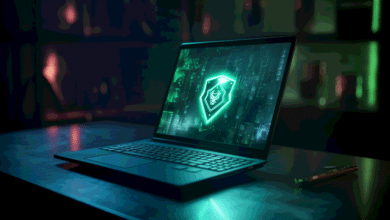Mowing Through the Mysteries: Lawn Mower Dictionary for Every Gardener

Maintaining a lush, green lawn is a point of pride for many homeowners. But navigating the world of lawnmowers can feel like deciphering a foreign language. Fear not, fellow green thumbs! This comprehensive lawnmower dictionary is your one-stop shop for understanding the lingo and making informed choices about your trusty turf-taming machine.
Step into any hardware store, and you’ll be bombarded with a dizzying array of lawnmowers. Push mowers, riding mowers, zero-turns, electric, gas-powered – the choices seem endless! But before you get overwhelmed, let’s equip you with the knowledge to navigate the aisles like a seasoned pro. This lawnmower dictionary is your Rosetta Stone, decoding the jargon and empowering you to choose the perfect mower for your needs.
Engine Types
Gas-powered: The traditional workhorse, gas mowers offer power and versatility. They come in various engine sizes, with larger engines tackling bigger lawns and tougher terrain. However, gas mowers require regular maintenance and emit fumes.
Electric: Eco-friendly and quieter than gas mowers, electric models are ideal for smaller lawns. They require minimal maintenance but offer less power and range. Cordless electric mowers provide freedom of movement, while corded models ensure uninterrupted operation.
Battery-powered: Taking electric mowers to the next level, battery-powered models offer zero emissions and exceptional quiet operation. However, their range and power are limited compared to gas mowers, and batteries require charging.
Mower Types
Push mowers: The classic choice for smaller lawns, push mowers are affordable and require no fuel or electricity. However, they require physical effort and may not be suitable for uneven terrain.
Riding mowers: Offering comfort and ease of use, riding mowers are ideal for larger lawns. They come in various sizes and features, from basic models to feature-packed machines with cup holders and headlights.
Zero-turn mowers: The ultimate in maneuverability, zero-turn mowers allow for tight turns and precise control. They’re perfect for lawns with obstacles or landscaping, but their price tag and complexity may deter some users.
Cutting Deck and Blades
Cutting deck: The housing that encloses the blades and determines the mower’s cutting width. Wider decks are more efficient for large lawns, while narrower decks are better for tight spaces.
Blades: The unsung heroes of lawn care, blades come in various materials and designs. Mulching blades, for example, chop grass clippings into fine particles that decompose and nourish the soil.
Additional Features
Self-propelled: Eliminates the need for pushing, making mowing effortless on larger lawns or hilly terrain.
Mulching: Reduces the need for fertilization by returning nutrient-rich grass clippings to the soil.
Bagging: Collects grass clippings for disposal, preventing them from clumping on the lawn.
Side discharge: Throws grass clippings to the side, ideal for areas where mulching isn’t desired.
Maintenance Tips
Sharpen blades regularly: Dull blades tear grass instead of cutting it cleanly, leading to brown patches and uneven growth.
Change the oil and filters: Regular maintenance keeps your engine running smoothly and extends the life of your mower.
Clean the deck: Caked-on grass clippings can clog the deck and hinder performance.
Store properly: Protect your mower from the elements with a cover or by storing it in a garage or shed.
Conclusion
By deciphering the lingo and understanding the options, you’ve transformed from a bewildered bystander to a confident lawnmower maestro. With this newfound knowledge, you can approach the aisles with a critical eye, choosing the perfect machine to tame your turf and cultivate a lush, verdant masterpiece. Remember, maintaining a beautiful lawn isn’t just about aesthetics; it’s about enjoying the outdoors, appreciating nature’s beauty, and creating a tranquil oasis for yourself and your loved ones. So, fire up your engine (or plug in your battery), roll up your sleeves, and revel in the satisfaction of a perfectly manicured lawn, knowing you achieved it with your own expert knowledge. Happy mowing!
FAQ
- What size lawnmower do I need?
Consider the size of your lawn, terrain, and physical limitations when choosing a mower size. A general rule of thumb is to go with a 20-inch cutting deck for lawns up to 1/2 acre, a 22-inch cutting deck for lawns up to 1 acre, and a 42-inch cutting deck for 1 acre or more. However, these are just starting points, and your specific needs may differ.
- Gas or electric?
Electric mowers are quieter, cleaner, and require less maintenance than gas mowers. They’re ideal for smaller lawns and users who prioritize eco-friendliness and noise reduction. However, they offer less power and range than gas mowers. Gas mowers, on the other hand, are more powerful and versatile, tackling larger lawns and tougher terrain with ease. However, they require regular maintenance and emit fumes, making them less suitable for environmentally conscious users or those with noise restrictions.
- What features are essential?
Self-propulsion is a welcome addition for larger lawns or hilly terrain, while mulching helps you skip the bagging and enrich your soil. Consider your priorities and how you’ll use the mower to determine which features are most important to you.
- How much should I spend?
Lawn mowers come in a wide range of prices, from budget-friendly push mowers to feature-packed riding mowers with hefty price tags. Set a realistic budget and prioritize features that matter most to you. Remember, the most expensive mower isn’t necessarily the best one for your needs.
- Where can I get help and repairs?
Many hardware stores and lawnmower dealerships offer repair services and expert advice. Additionally, online resources and tutorials can provide valuable guidance for maintenance and troubleshooting.




